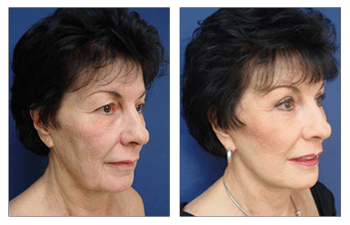
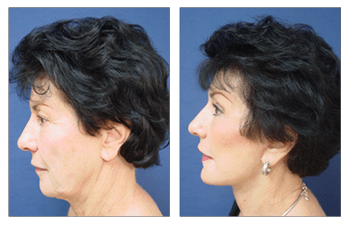
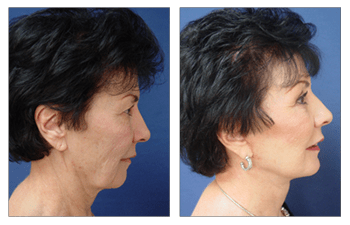
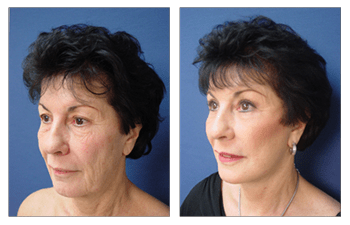
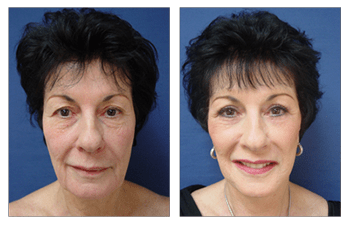

Download Our Surgical Team’s free Liposuction eBook
Facelift definition means a facial rejuvenation surgery that involves undermining and lifting the skin and soft tissues of the face using strategically hidden incisions around the ear. The undermining and lifting of the skin and soft tissues are intended to reverse the signs of aging over the face and neck.
The facial aging signs include prominent nasolabial folds, deep nasojugal grooves, bunching of skin and soft tissues along the jawline, called jowls, and soft tissue fullness and skin redundancy of the neck. The facelift definition as it relates to the specific maneuvers above has definitely evolved over the last few years.
The Facelift Surgery
The evolution of facelift definition has been most affected by our understanding of the facial soft tissue. At first glance, it seems that the signs of aging relate to sagging of the skin only.
However, over the last two decades, not only have we delineated the soft tissue anatomy that lies under the skin (facelift surgery), but we have also discovered its contribution to facial aging as well as how these soft tissues can be used to improve facelift results. Nowadays, facelift surgery is becoming common.
What we are talking about is a soft tissue layer that lies just under the skin and over the facial muscles, called the superficial muscular aponeurotic system, shortened to SMAS.
The SMAS is comprised of fat and connective tissues that line the facial muscles and similar to the skin can droop and bunch up for example along the jawline thus creating jowling.
In addition, the SMAS can be undermined and lifted much like the skin layer has been traditionally undermined and lifted and undermined.
Finally, it has been realized that if the SMAS is used to lift the sagging facial tissues as a separate layer in addition to the skin, it will provide several advantages that include a more comprehensive dual plane of lift of the sagging tissues as well as to natural and non-operated appearance.
Facelift’s definition today encourages a dual-plane SMAS and skin lift in order to achieve a superior and yet natural appearance. Ultimately, the use of the SMAS allows for a more comprehensive lifting of the soft tissues while removing the leverage tension placed on the skin pull.
In fact, approximately 60 % of the weight of the skin is lifted by the SMAS which then minimizes the pull required to achieve the lift on the skin itself.
If you are considering facelift surgery, we encourage you to make a consultation with Our Surgical Team so that you can further educate yourself on facelift definition.
This 72-year-old female demonstrates an aesthetically pleasing and natural rejuvenation of her eyes, cheeks, jowls, and neckline after the facelift surgery.


